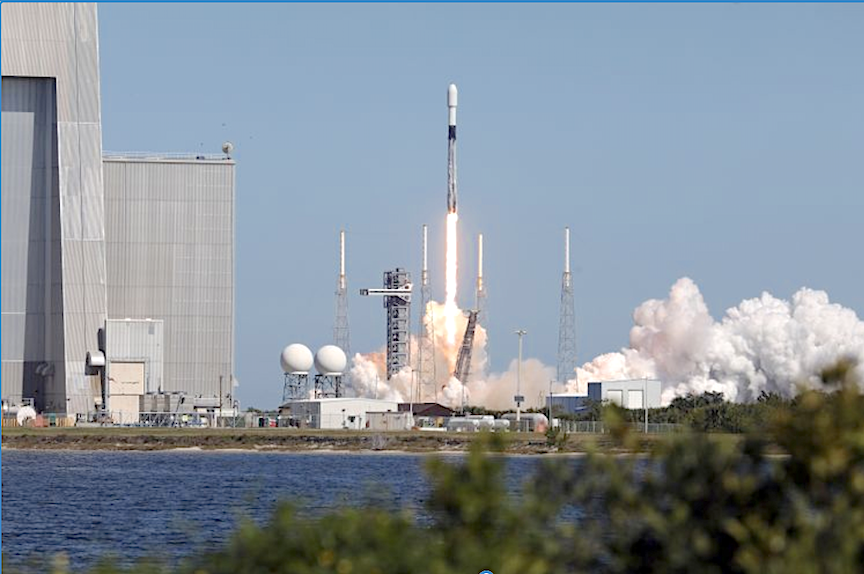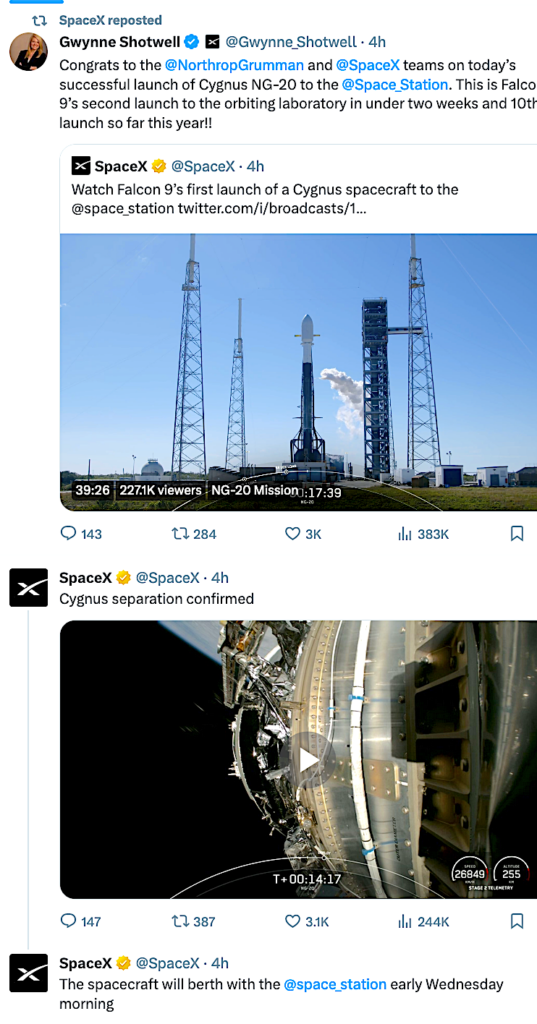
CAPE CANAVERAL, Fla. – Jan. 30, 2024 – Northrop Grumman Corporation’s (NYSE: NOC) Cygnus cargo delivery spacecraft was successfully launched to the International Space Station today by SpaceX’s Falcon 9 rocket from Space Launch Complex 40 at Cape Canaveral Space Force Station in Florida. This is the company’s 20th resupply mission, designated as NG-20.

(Photo Credit: Northrop Grumman)
- Under NASA’s Commercial Resupply Service-2 (CRS-2) contract, Cygnus is carrying more than 8,200 pounds of critical supplies, equipment and science experiments for astronauts on the station.
- After its rendezvous with the International Space Station on February 1, Cygnus will remain attached to the station for up to six months. The spacecraft may perform additional services such as reboosting the station’s orbit to counteract atmospheric drag. Northrop Grumman’s Cygnus provides the only U.S. spacecraft reboost capability for the International Space Station.
- Cygnus uses Northrop Grumman’s vertical integration capabilities, incorporating essential products manufactured by the company like spacecraft structures, propellant tanks, UltraFlex solar arrays and loop heat pipe radiators for thermal control.
Expert:
Cyrus Dhalla, vice president and general manager, tactical space systems, Northrop Grumman said, “This mission reflects Cygnus’s flexibility to launch on a variety of launch vehicles, demonstrating our ability to deliver on our commitments to support NASA’s mission. With a decade of experience in cargo and logistics services, Northrop Grumman will continue supporting missions on the International Space Station and future civil and commercial exploration.”
Details on Cygnus:
Each Cygnus spacecraft is named in honor of an individual who has made significant contributions to human spaceflight. For the NG-20 mission, Cygnus celebrates the legacy of Dr. Patricia “Patty” Hilliard Robertson, a medical doctor, avid aerobatic pilot and NASA astronaut. She completed a two-year Space Medicine fellowship at the University of Texas Medical Branch and NASA’s Johnson Space Center. Robertson was selected as an astronaut in 1998 and scheduled to fly to the ISS in 2002, before her untimely death in 2001 from injuries sustained in a private plane crash.


And of course a successful tenth flight of the first stage booster supporting this mission, which previously launched Crew-5, GPS III Space Vehicle 06, Inmarsat I6-F2, CRS-28, Intelsat G-37, and four Starlink missions. Following stage separation, Falcon 9 landed at the Cape Canaveral Space Force Station Landing Zone 1 (LZ-1).
